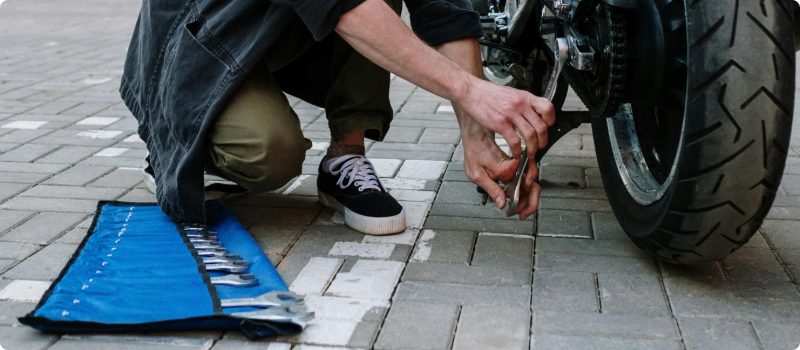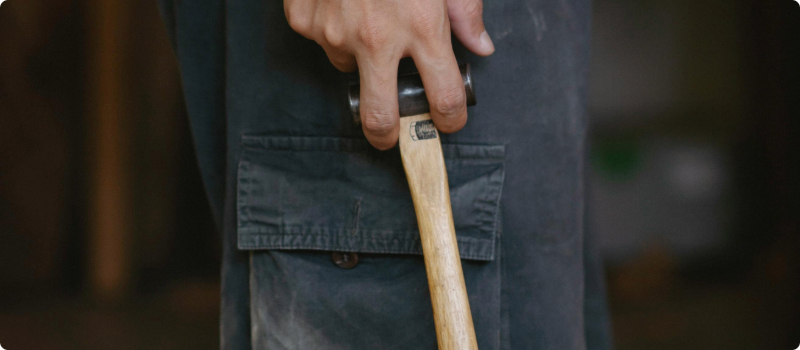Motorcycle tools every rider should own
Updated June 19, 2024 . AmFam Team
If you own a motorcycle, chances are you do a lot of the daily maintenance yourself. If you’re a new rider or just new to doing your own work on your bike, here’s a short — but important — list of tools you should always have handy.

Wrenches. You’ll want your essential open-ended and combination wrenches, as well as a socket wrench set and torque wrenches. Wrenches are one of those basic tools you’ll want a variety of.
Screwdrivers. Phillips and flathead screwdrivers are necessities in any tool kit. You’ll want to keep them handy for opening and closing panels.
Pliers. Like wrenches, you’ll want a variety, including a pair of needle-nose for pinching, pulling and getting into small spaces and a pair of slip-joint pliers for gripping.

Rubber hammer. The rubber hammer is one of those tools you may not need often but can be good to have when you just need a little force to help move things into position without doing any damage to your baby.
Impact driver. Good for when you’re in a jam. Steel screws tend to lock into place, but an impact driver is going to be just the tool you need to help break those stubborn screws loose.
Tire pressure gauge. Maintaining proper tire pressure is crucial to your bike’s handling and performance. Checking the pressure before every ride is ideal, but if that’s not possible, this is a tool you want to keep on you at all times when riding.

Oil drain pan. Changing your oil is one of the easiest and most common maintenance jobs people do on their own, so an oil pan is vital. If you change your own oil, you absolutely need a drain pan to catch that old oil and transport it for proper disposal.
Bike stand. New bikes don’t tend to come with a center stand like old ones, so anytime you’re working on your bike, it’s convenient to have a stand to elevate and hold your bike in place. They’re also beneficial for storing your bike during for long periods of time.
Your bike’s factory manual. Every bike is different, and if anyone can tell you how to best take care of your baby, it’s the manufacturer. If you don't have a physical copy, you may be able to find one online.
When it comes to your tools you don’t want to skimp on quality, and the great thing about most of these tools is they’re not motorcycle specific. You’ll definitely have other uses for them and get more bang for your DIY buck.
This article is for informational purposes only and based on information that is widely available. We do not make any guarantees or promise any results based on this information.

